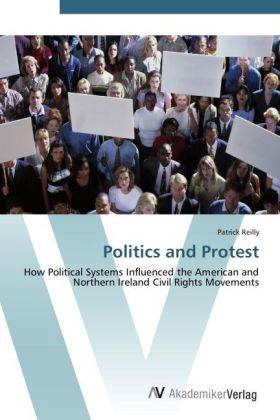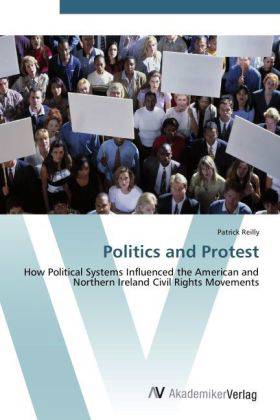
- Afhalen na 1 uur in een winkel met voorraad
- Gratis thuislevering in België vanaf € 30
- Ruim aanbod met 7 miljoen producten
- Afhalen na 1 uur in een winkel met voorraad
- Gratis thuislevering in België vanaf € 30
- Ruim aanbod met 7 miljoen producten
Zoeken
Politics and Protest
How Political Systems Influenced the American and Northern Ireland Civil Rights Movements
Patrick Reilly
Paperback | Engels
€ 60,95
+ 121 punten
Omschrijving
Revision with unchanged content. Social movements are not created in a vacuum. The nature of the political system in which social movements operate influences the strategies chosen by leaders. The question becomes why do some leaders chose to remain peaceful, working through the existing political structure and why do some choose to become violent? In systems that have an independent judiciary, numerous electable ideologies and a federal system of government leaders of social movements are encouraged to work through the system to accomplish their goals. In systems that do not have these characteristics, social movements must work outside the system, often times aiming to destroy the existing political system in the process. Achieving their goals is not possible in the current environment. This book is a closer examination of those dimensions, through a comparative case study of the African-American Civil Rights movement in the United States and the Catholic Civil Rights movement in Northern Ireland.
Specificaties
Betrokkenen
- Auteur(s):
- Uitgeverij:
Inhoud
- Aantal bladzijden:
- 96
- Taal:
- Engels
Eigenschappen
- Productcode (EAN):
- 9783639454048
- Verschijningsdatum:
- 21/08/2012
- Uitvoering:
- Paperback
- Formaat:
- Trade paperback (VS)
- Afmetingen:
- 152 mm x 229 mm
- Gewicht:
- 149 g

Alleen bij Standaard Boekhandel
+ 121 punten op je klantenkaart van Standaard Boekhandel
Beoordelingen
We publiceren alleen reviews die voldoen aan de voorwaarden voor reviews. Bekijk onze voorwaarden voor reviews.








